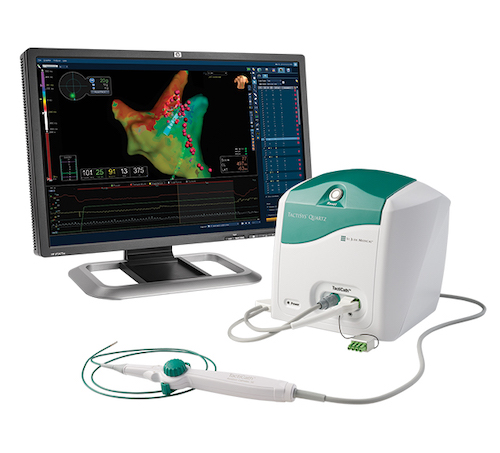
May 2, 2022 – Abbott announced results from the PERSIST-END study, which showed that nearly nine out of 10 patients (89%) treated for persistent atrial fibrillation (AFib) with the company’s TactiCath™ Contact Force Ablation Catheter, Sensor Enabled™ (TactiCath SE) remained symptom-free for up to 15 months following the procedure. The data also showed that due to the more effective therapy, patients reported significant quality-of-life improvements and more than 50% reduction in the use of health care resources.
Millions of Americans are affected by abnormal heart rhythms, known as arrhythmias, caused by breakdowns in the electrical pathways of the heart. Left untreated, these breakdowns can lead to erratic heartbeats or cause the heart to beat too fast or too slow, which can dramatically impact a person’s health. AFib, the most common arrhythmia, is a condition in which the heart’s chambers are out of sync, causing them to beat in a rapid and chaotic fashion. Persistent AFib is a type of arrhythmia that lasts anywhere from one week to a year. If left untreated, AFib may eventually lead to heart failure or stroke.
AFib is categorized into three types: paroxysmal, persistent or long-standing persistent. Paroxysmal is defined as an abnormal heart rhythm that lasts for less than a week, persistent lasts between one week to a year, and long-standing persistent lasts longer than a year. Approximately half of patients with AFib have a long-standing persistent heart rhythm issue while the remaining 50% are equally divided between paroxysmal and persistent. TactiCath SE was previously approved for paroxysmal AFib and the data from the PERSIST-END study supported approval of the additional indication in persistent AFib in 2021.
TactiCath SE is used as part of a cardiac ablation procedure, a minimally invasive method that allows doctors to treat the condition at the source by selectively disrupting the area of the heart generating abnormal heart beats. The catheter provides doctors essential and immediate feedback when the tip of the ablation catheter connects with the tissue within the heart, which can help improve accuracy and consistency of the procedure. It is used in conjunction with Abbott’s EnSite™ X EP System, the Advisor™ HD Grid Mapping catheter, and EnSite Omnipolar Technology (OT).
